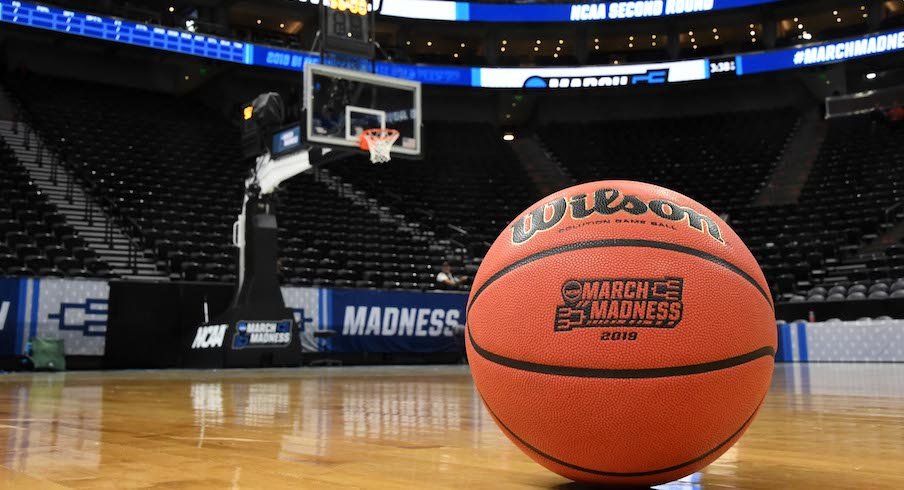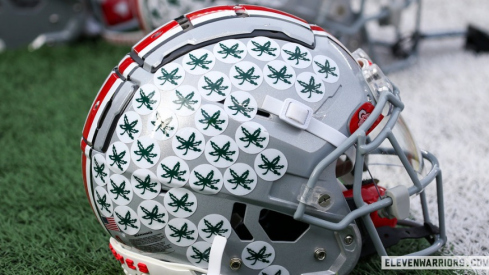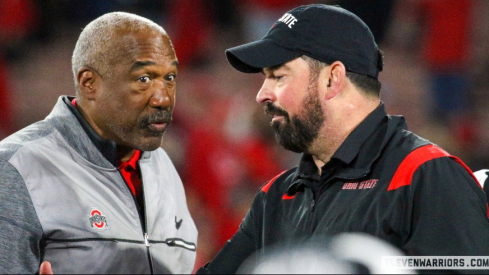The NCAA is moving toward allowing some fans to attend this year’s NCAA Tournament.
During an appearance on the Greater Columbus Sports Commission’s Virtual Sports Report on Thursday morning, NCAA senior vice president of basketball Dan Gavitt said that while no final decision on fan attendance has been made yet, an announcement on members of the general public being able to attend tournament games this year could be coming soon.
“We’re poised to make an announcement here in the next several days about fan attendance, and we’re hopeful and optimistic that we may have limited attendance for general fans, but up to and no more than 25%,” Gavitt said. “And that would be a maximum, if we get there, based on the size of the six different venues we’re using in Indianapolis. So in many cases, we won’t even come close to 25% by keeping that six feet of physical distancing needed in each of the venues. But maybe by the time we get to Lucas Oil Stadium, a much larger venue, we may have slightly closer to 20-25% capacity.”
Gavitt said a plan already has been approved for the men’s NCAA Tournament in Indiana and the women’s NCAA Tournament in San Antonio to allow each member of each team’s travel party – which will consist of 34 athletes, coaches, staff and administrators for each team – to have six family members or guests in attendance at their games.
Due to COVID-19 protocol, the men’s NCAA Tournament is set to be played entirely within the state of Indiana, with games to be held at six venues: Lucas Oil Stadium, Bankers Life Fieldhouse, Hinkle Fieldhouse and Indiana Farmers Coliseum in Indianapolis, Assembly Hall in Bloomington and Mackey Arena in West Lafayette. Should one of those venues become unable to host tournament games for any reason, Worthen Arena in Muncie (where Ball State plays) and Hulman Center in Terre Haute (where Indiana State plays) are contingency options to host games if needed.
As for the possibility of teams being unable to play in the tournament, Gavitt said the NCAA is optimistic that its testing protocol will prevent teams from having to drop out of the tournament entirely, but said plans are being finalized for lining up replacement teams if needed. That said, a team would only be replaced before the tournament starts; if a team becomes unable to play after the tournament begins, that team would simply be removed from the bracket.
“I think we saw that in Columbus with The Basketball Tournament this summer and how they managed that with kind of teams on standby, and we have a plan that the men’s basketball committee has approved, women’s basketball committee will look at tomorrow and we think we have a good solution there,” Gavitt said. “We hope it won’t have to be activated, of course. The teams in the men’s and women’s basketball championships will have to have seven consecutive daily tests before they arrive in Indianapolis and San Antonio, and then daily testing upon arrival. So we hope and think that the risk of an entire team being ineligible for the championship is low, but nevertheless, we know from what we’ve seen in the regular season, disruption is part of this for everyone’s health and safety through contact tracing, and if it results in a team not being able to play, we’ll have a plan in place for a replacement.
“Really, there’s not an opportunity to introduce a replacement team once the tournaments are underway, for competitive equity reasons, but we do hope to start both championships with full fields.”
Ohio State athletic director Gene Smith also participated in Thursday morning’s Virtual Sports Report, and praised Gavitt for his efforts to make this year’s NCAA Tournament possible, while also sharing his thoughts on how he believes Ohio State has been able to create a safe environment for its athletes despite the continuing pandemic.
“Our student-athletes have really embraced the protocols that our medical subcommittee from the Big Ten put in place,” Smith said. “Dan and I were chatting before this session, and the one thing that’s true for our athletes is the safest place for them is in our cocoon, in the bubble that we’ve created that they’ve been a part of, and our positivity rate is low. Our focus is always to make sure their health and safety is first and foremost. And they’ve embraced what we’ve asked them to do. So really fortunate to have coaches and strength coaches and trainers who have helped our student-athletes follow the protocols that we’ve put in place.”
Smith was also asked about the uncertainty regarding how the Big Ten will determine its regular-season basketball champions due to unbalanced schedules, given that Michigan currently has the best winning percentage in conference games (9-1) but has won fewer games than Illinois (11-3) and Ohio State (11-4). He did not express an opinion on how the Big Ten should make that determination, but said he anticipates that will be discussed among Big Ten athletic directors over the next couple of weeks.
“The reality is, the unbalanced schedule is a challenge, we understand that, but we will be able to once we get toward the end of the season and look back and see what we’ve dealt with,” Smith said. “When you think about teams that hadn’t had the opportunity to play for a long period of time, that doesn’t mean that’s not a good basketball team. So you have to at the end of the day just be able to adjust, and even if we had designed balanced schedules, it would have ended up being unbalanced because of the postponements and cancellations. So I’m fine with it. I’m just glad all of our kids and all of our schools have a chance to play, and as we get toward the end of the season, as ADs, we may have to make different decisions around tiebreakers and things of that nature. We’ll just have to adjust.”


